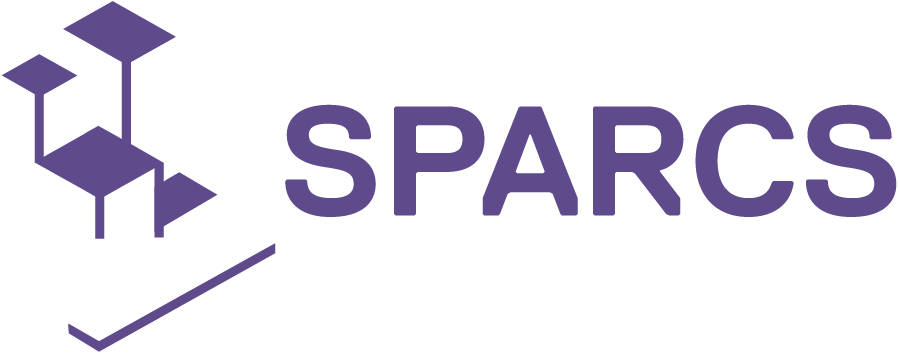Energy Management at the Baumwollspinnerei Leipzig: Making the Invisible Visible
Energy management can be described and defined in many ways, but essentially it involves a holistic overview and optimisation of your entire energy system. It requires monitoring of your energy generation or supply, the networks used for the transportation of this energy as well as its consumption or storage.
SPARCS demo site, Baumwollspinnerei, in the lighthouse city of Leipzig, is currently where the limits of energy management are being tested.
Energy management helps to optimise your energy system, detect faults, reduce losses, automate energetic functions, and make them more efficient. All of this is essentially done to save energy, reduce costs and reduce the environmental impact. With energy management systems, the relationship between the consumer and the producer is defined, and optimally, prosumers are established.
The process of energy management includes the installation of meters for monitoring. These are strategically installed in specific locations to gather information and provide valuable insight. Innovative meters are remotely readable and coupled to a software solution. This allows collecting data in real time and at the level of aggregation of your choice. The data is then displayed in a graphical representation for ease of interpretation, processing and comparison.

The data helps identify weak points, and a concept is developed to optimise the system. This may include anything from the introduction of renewable energy sources, such as PV plants, to the supply or the installation of multi-use generators, such as CHP unit, which simultaneously produces heat and power. Replacing outdated hardware with a more efficient version.
Optimisations can also be enhanced by adjusting the timing of consumption to more favourable times. This could mean synchronising the use of appliances that have high energy demands to time frames when generation is at its highest (i.e., when the sun is shining in the case of PV), or simply spreading out the consumption load to avoid peaks (not all machines and appliances are switched on at once).
Additionally, the structures and networks need to be investigated and potentially refurbished. The use of energy management software is essential for optimally linking several different power generators with different consumers and storage units.
At the Baumwollspinnerei, one of the demo districts in Leipzig, cenero.one used for energy management. Cenero.one allows data from all different energy sources to reflect on one single portal. This can be anything from gas, water, electricity and heating through to any imaginable sensor readings such as temperature, air quality, the brightness of lighting etc. This makes comparisons clear and analysing and drawing conclusions very easy. The system uses LoRa technology(Long Range Radio), making it a reliable choice for large sites.
Producers on this site include a 71kWp PV plant, a CHP unit with buffer storage and two storage systems – one in the conventional form of a battery and one in the innovative form of an EV with bidirectional charging capabilities. The last one means that the loading currents of the EV can be used reversibly to be fed into the grid when the loading schedule of the car makes this possible. Providing electric energy in this way turns an electric car into a temporary energy storage unit and, therefore, a prosumer.
Baumwollspinnerei tenants include small businesses, art studios and ateliers and EV charging stations which presents a very diverse and dynamic energy consumption behaviour. Thus, for an energy management strategy to be efficient, it needs to consider the energy demands of all current tenants but also anticipate all potential future tenants.
Currently, at the Baumwollspinnerei, the concept of a microgrid is being analysed. A microgrid is a decentralised network of producers and consumers. Energy is generated and consumed locally on-site, creating a self-sufficient environment. In this case, the energy generated from the PV system and CHP unit is monitored, and if supply is higher than demand, energy is steered to the storage units (the battery or the EVs).
Once demand is higher than the generation, the grid is automatically supplemented by the stored energy in order to keep up with demand. The system also allows you to set peak parameters, and it will automatically notify you if you approach such a limit. In the case of heating, intelligent heat sensors are installed on the heaters and incorporated into the energy management software. When there is no longer a demand for heating, the system signals the heat pumps to stop circulating heat for that area.
Energy management opens the doors to more sustainable energy production and consumption. It lays the foundation for energy optimisation measures with significant benefits: reducing consumption, lowering costs, reducing wear and tear or strain on your network, and increasing production. Energy management helps lower CO2 emissions, identify faults better and simplify the detection of their location.
For the consumer, it could mean increased property value, more accurate tenant bills, and the ability to make a prognosis for improved budgeting and benchmarking. It enables threshold surveillance and load balancing.
Visualising the flow of energy (making the invisible visible) reveals the curtains behind energy consumption, encouraging users to be more proactive with their efforts to conserve energy.
Photo credit: Knut Maurive

